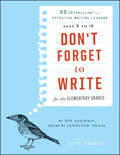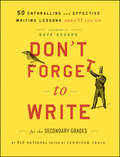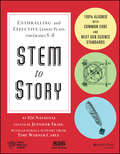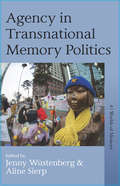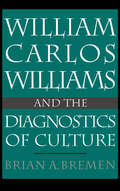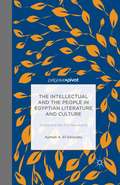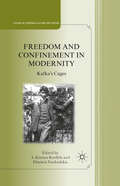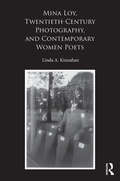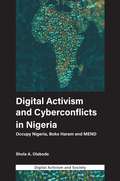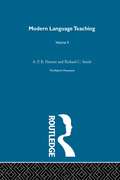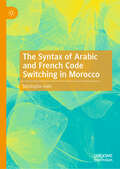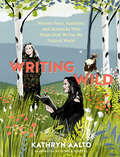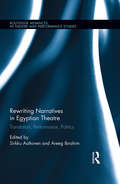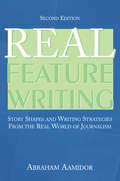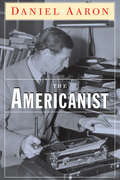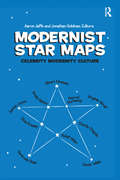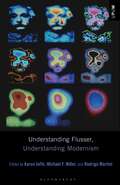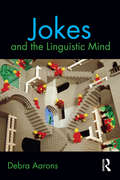- Table View
- List View
Don't Forget to Write for the Elementary Grades: 50 Enthralling and Effective Writing Lessons (Ages 5 to 12)
by 826 NationalCreative strategies for getting young students excited about writing Don't Forget to Write for the Elementary Grades offers 50 creative writing lesson plans from the imaginative and highly acclaimed 826 National writing labs. Created as a resource to reach all students (even those most resistant to creative writing), the lessons range from goofy fun (like "The Other Toy Story: Make Your Toys Come to Life") to practical, from sports to science, music to mysteries. These lessons are written by experts, and favorite novelists, actors, and other celebrities pitched in too. Lessons are linked to the Common Core State Standards. A treasure trove of proven, field-tested lessons to teach writing skills Inventive and unique lessons will appeal to even the most difficult-to-reach students 826 National has locations in eight cities: San Francisco, New York, Los Angeles, Ann Arbor, Chicago, Seattle, Boston, and Washington DC 826 National is a nonprofit organization, founded by Dave Eggers, and committed to supporting teachers, publishing student work, and offering services for English language learners.
Don't Forget to Write for the Secondary Grades: 50 Enthralling and Effective Writing Lessons (Ages 11 and Up)
by 826 NationalFantastic strategies for getting high school students excited about writing This book offers 50 creative writing lesson plans from the imaginative and highly acclaimed 826 National writing labs. Created as a resource to reach all students (even those most resistant to creative writing), the off-beat and attention-grabbing lessons include such gems as "Literary Facebooks," where students create a mock Facebook profile based on their favorite literary character, as well as highly practical lessons like the "College Application Essay Boot Camp." These writing lessons are written by experts—and favorite novelists, actors, and other entertainers pitched in too. Road-tested lessons from a stellar national writing lab Inventive and unique lessons that will appeal to even the most difficult-to-reach students Includes a chart linking lessons to the Common Core State Standards 826 National is an organization committed to supporting teachers, publishing student work, and offering services for English language learners.
Don't Forget to Write for the Secondary Grades: 50 Enthralling and Effective Writing Lessons (Ages 11 and Up)
by 826 NationalFantastic strategies for getting high school students excited about writing This book offers 50 creative writing lesson plans from the imaginative and highly acclaimed 826 National writing labs. Created as a resource to reach all students (even those most resistant to creative writing), the off-beat and attention-grabbing lessons include such gems as "Literary Facebooks," where students create a mock Facebook profile based on their favorite literary character, as well as highly practical lessons like the "College Application Essay Boot Camp." These writing lessons are written by experts—and favorite novelists, actors, and other entertainers pitched in too. Road-tested lessons from a stellar national writing lab Inventive and unique lessons that will appeal to even the most difficult-to-reach students Includes a chart linking lessons to the Common Core State Standards 826 National is an organization committed to supporting teachers, publishing student work, and offering services for English language learners.
STEM to Story: Enthralling and Effective Lesson Plans for Grades 5-8
by 826 NationalBring STEM to life for students with zombies, rockets, celebrities, and more STEM to Story: Enthralling and Effective Lesson Plans for Grades 5-8 inspires learning through fun, engaging, and meaningful lesson plans that fuse hands-on discovery in science, technology, engineering, and math (STEM) with creative writing. The workshop activities within the book are the innovative result of a partnership between 826 National's proven creative writing model and Time Warner Cable's Connect a Million Minds, an initiative dedicated to connecting young people to the wonders of STEM through hands-on learning. Authentically aligned with both the Common Core State Standards and the Next Generation Science Standards, this book provides teachers, after-school and out-of-school providers, and parents with field-tested lessons, workshops, and projects designed by professionals in each field. Including reflective observations by arts and science celebrities like Jon Scieszka, Mayim Bialik, and Steve Hockensmith, lessons feature bonus activities, fun facts, and teaching points for instructors at every level. These quirky, exploratory lessons will effectively awaken student imaginations and passions for both STEM and creative writing, encourage identity with scientific endeavors, and make both science and writing fun. Grades five through eight is the critical period for engaging students in STEM, and this book is designed specifically to appeal to – and engage – this age group. The guided curricula fosters hands-on discovery, deep learning, and rich inquiry skills while feeling more like play than school, and has proven popular and effective with both students and teachers. Awaken student imagination and get them excited about STEM Fuse creative writing with STEM using hands-on activities Make scientific principles relevant to students' lives Inspire students to explore STEM topics further The demand for STEM workers is closely linked to global competitiveness, and a successful future in STEM depends upon an early introduction to the scientific mindset. The challenge for teachers is to break through students' preconceptions of STEM fields as "hard" or "boring," to show them that STEM is everywhere, it's relevant, and it's loads of fun. For proven lesson plans with just a dash of weird, STEM to Story is a dynamic resource, adaptable and applicable in school, after school, and at home.
STEM to Story: Enthralling and Effective Lesson Plans for Grades 5-8
by 826 NationalBring STEM to life for students with zombies, rockets, celebrities, and more STEM to Story: Enthralling and Effective Lesson Plans for Grades 5-8 inspires learning through fun, engaging, and meaningful lesson plans that fuse hands-on discovery in science, technology, engineering, and math (STEM) with creative writing. The workshop activities within the book are the innovative result of a partnership between 826 National's proven creative writing model and Time Warner Cable's Connect a Million Minds, an initiative dedicated to connecting young people to the wonders of STEM through hands-on learning. Authentically aligned with both the Common Core State Standards and the Next Generation Science Standards, this book provides teachers, after-school and out-of-school providers, and parents with field-tested lessons, workshops, and projects designed by professionals in each field. Including reflective observations by arts and science celebrities like Jon Scieszka, Mayim Bialik, and Steve Hockensmith, lessons feature bonus activities, fun facts, and teaching points for instructors at every level. These quirky, exploratory lessons will effectively awaken student imaginations and passions for both STEM and creative writing, encourage identity with scientific endeavors, and make both science and writing fun. Grades five through eight is the critical period for engaging students in STEM, and this book is designed specifically to appeal to – and engage – this age group. The guided curricula fosters hands-on discovery, deep learning, and rich inquiry skills while feeling more like play than school, and has proven popular and effective with both students and teachers. Awaken student imagination and get them excited about STEM Fuse creative writing with STEM using hands-on activities Make scientific principles relevant to students' lives Inspire students to explore STEM topics further The demand for STEM workers is closely linked to global competitiveness, and a successful future in STEM depends upon an early introduction to the scientific mindset. The challenge for teachers is to break through students' preconceptions of STEM fields as "hard" or "boring," to show them that STEM is everywhere, it's relevant, and it's loads of fun. For proven lesson plans with just a dash of weird, STEM to Story is a dynamic resource, adaptable and applicable in school, after school, and at home.
Agency in Transnational Memory Politics (Worlds of Memory #4)
by A Jenny Wüstenberg A Aline SierpThe dynamics of transnational memory play a central role in modern politics, from postsocialist efforts at transitional justice to the global legacies of colonialism. Yet, the relatively young subfield of transnational memory studies remains underdeveloped and fractured across numerous disciplines, even as nascent, boundary-crossing theories on topics such as multi-vocal, traveling, or entangled remembrance suggest new ways of negotiating difficult political questions. This volume brings together theoretical and practical considerations to provide transnational memory scholars with an interdisciplinary investigation into agency—the “who” and the “how” of cross-border commemoration that motivates activists and fascinates observers.
William Carlos Williams And The Diagnostics Of Culture
by Brian Bremen A.Bremen's study examines the development of William Carlos Williams's poetics, focusing in particular on Williams's ongoing fascination with the effects of poetry and prose, and his life-long friendship with Kenneth Burke. Using a framework based on Burke's and Williams's theoretical writings and correspondence, as well as on the work of contemporary cultural critics, Bremen looks closely at how Williams's poetic strategies are intimately tied to his medical practice, incorporating a form of methodological empiricism that extends his diagnoses beyond the individual to include both language and community. The book develops a series of rhetorical, cognitive, medical, and political analogues that clarify the poetic and cultural achievements Williams hoped to realize in his writing.
Axis/Axes to Grind: Political Slants in American World War II Novels, 1945-1975 (Clemson University Press)
by Milton A. CohenAxis/Axes to Grind studies various political themes in American World War II novels of three decades. These themes include “big picture” novels that interpret the war’s meaning and predict the postwar political climate (The Naked and the Dead, The Young Lions) and novels that dramatize rebellions against military authority (From Here to Eternity, The Caine Mutiny and Catch-22). “Political” also includes conflicts between various minorities and the dominant socio-political culture (White, Christian and heterosexual). Racial conflicts appear in If He Hollers Let Him Go, And Then We Heard the Thunder and Guard of Honor); subversive gay themes inform The Gallery; anti-Semitic conflicts appear in several novels, particularly the Holocaust novel Point of No Return. War novels written well after the war tend to see the war through the lens of the author's own times. Thus, the 1960s protests against the Vietnam war inform the pacifism in Slaughterhouse-Five. And in Gravity's Rainbow, the transnational cartels that enable the V-2 rocket attacks against England prefigure the military-industrial complex of Pynchon's time.
The Intellectual and the People in Egyptian Literature and Culture: Am?ra and the 2011 Revolution
by Ayman A. El-DesoukyThe Intellectual and the People in Egyptian Literature and Culture uses the notion of am?ra – the Egyptian concept of collective and connective agency – to explore the relationship between the Egyptian intellectual and 'the people' in contemporary Egyptian literature and culture.
Freedom and Confinement in Modernity: Kafka's Cages (Studies in European Culture and History)
by A. Kiarina Kordela & Dimitris VardoulakisKafka's literary universe is organized around constellations of imprisonment. Freedom and Confinement in Modernity proposes that imprisonment does not signify a tortured state of the individual in modernity. Rather, it provides a new reading of imprisonment suggesting it allows Kafka to perform a critique of a modernity instead.
Mina Loy, Twentieth-Century Photography, and Contemporary Women Poets
by Linda A. KinnahanIn Mina Loy, Twentieth-Century Photography, and Contemporary Women Poets, Linda A. Kinnahan explores the making of Mina Loy’s late modernist poetics in relation to photography’s ascendance, by the mid-twentieth century, as a distinctively modern force shaping representation and perception. As photography develops over the course of the century as an art form, social tool, and cultural force, Loy’s relationship to a range of photographic cultures emerging in the first half of the twentieth century suggests how we might understand not only the intriguing work of this poet, but also the shaping impact of photography and new technologies of vision upon modernist poetics. Framing Loy’s encounters with photography through intersections of portraiture, Surrealism, fashion, documentary, and photojournalism, Kinnahan draws correspondences between Loy’s late poetry and visual discourses of the body, urban poverty, and war, discerning how a visual rhetoric of gender often underlies these mappings and connections. In her final chapter, Kinnahan examines two contemporary poets who directly engage the camera’s modern impact –Kathleen Fraser and Caroline Bergvall – to explore the questions posed in their work about the particular relation of the camera, the photographic image, and the construction of gender in the late twentieth century.
Mina Loy, Twentieth-Century Photography, and Contemporary Women Poets
by Linda A. KinnahanIn Mina Loy, Twentieth-Century Photography, and Contemporary Women Poets, Linda A. Kinnahan explores the making of Mina Loy’s late modernist poetics in relation to photography’s ascendance, by the mid-twentieth century, as a distinctively modern force shaping representation and perception. As photography develops over the course of the century as an art form, social tool, and cultural force, Loy’s relationship to a range of photographic cultures emerging in the first half of the twentieth century suggests how we might understand not only the intriguing work of this poet, but also the shaping impact of photography and new technologies of vision upon modernist poetics. Framing Loy’s encounters with photography through intersections of portraiture, Surrealism, fashion, documentary, and photojournalism, Kinnahan draws correspondences between Loy’s late poetry and visual discourses of the body, urban poverty, and war, discerning how a visual rhetoric of gender often underlies these mappings and connections. In her final chapter, Kinnahan examines two contemporary poets who directly engage the camera’s modern impact –Kathleen Fraser and Caroline Bergvall – to explore the questions posed in their work about the particular relation of the camera, the photographic image, and the construction of gender in the late twentieth century.
Digital Activism and Cyberconflicts in Nigeria: Occupy Nigeria, Boko Haram and MEND (Digital Activism and Society: Politics, Economy and Culture in Network Communication)
by Shola A. OlabodeThis book offers an innovative contribution to the literature on digital activism and cyberconflicts. Analysing sociopolitical and ethnoreligious conflicts within an African-centred context, the author uses Nigeria as a lens to understand the digital and organisational aspects of digital media uses in the Occupy Nigeria movement protest, the Boko Haram conflict and The Movement for the Emancipation of the Niger Delta (MEND) conflict. Timely, in a period of intense conflict across the globe, the author employs an interdisciplinary approach, drawing on the Cyberconflict Framework to examine conflicts emerging in computer-mediated environments. Examining the implications for socio-political and economic reform and change, the cases explored provide a snapshot of the emerging digital culture of conflict. The book contributes to existing knowledge by bridging the gap in the literature on digital activism and conflict as a field of study.
Digital Activism and Cyberconflicts in Nigeria: Occupy Nigeria, Boko Haram and MEND (Digital Activism and Society: Politics, Economy and Culture in Network Communication)
by Shola A. OlabodeThis book offers an innovative contribution to the literature on digital activism and cyberconflicts. Analysing sociopolitical and ethnoreligious conflicts within an African-centred context, the author uses Nigeria as a lens to understand the digital and organisational aspects of digital media uses in the Occupy Nigeria movement protest, the Boko Haram conflict and The Movement for the Emancipation of the Niger Delta (MEND) conflict. Timely, in a period of intense conflict across the globe, the author employs an interdisciplinary approach, drawing on the Cyberconflict Framework to examine conflicts emerging in computer-mediated environments. Examining the implications for socio-political and economic reform and change, the cases explored provide a snapshot of the emerging digital culture of conflict. The book contributes to existing knowledge by bridging the gap in the literature on digital activism and conflict as a field of study.
Early Years of Reform (Logos Studies in Language and Linguistics)
by A. P. R. Howatt and Richard C. SmithThis volume forms part of a five volume set charting the progress of the nineteenth century movement, which was instrumental in establishing international guidelines for the teaching of modern languages. It was during this period that for the first time, co-operation between phoneticians and teachers culminated in the publication of works that were instrumental in establishing the 'applied linguistic' approach to language teaching in the twentieth century. For the first time, too, the new science of psychology influenced a scientific theory of second language acquisition. The Reform Movement attracted support across Europe, spurring the development of new professional associations and journals. In turn, the publication in these journals of reports of innovative practice contributed to a greater sense of autonomy and professionalism among modern language teachers, who had hitherto tended to live under the shadow of classical language teaching. The practical innovations and theoretical suggestions for the foreign language teaching, although rooted in the nineteenth century, still have relevance today.
The Syntax of Arabic and French Code Switching in Morocco
by Mustapha AabiThis book posits a universal syntactic constraint (FPC) for code switching, using as its basis a study of different types of code-switching between French, Moroccan Arabic and Standard Arabic in a language contact situation. After presenting the theoretical background and linguistic context under study, the author closely examines examples of syntactic constraints in the language of functional bilinguals switching between French and forms of Arabic, proposing that this hypothesis can also be applied in other comparable language contact and translanguaging contexts worldwide. This book will be of interest to students and scholars of French, Arabic, theoretical linguistics, syntax and bilingualism.
Writing Wild: Women Poets, Ramblers, and Mavericks Who Shape How We See the Natural World
by Kathryn AaltoWriting Wild, by New York Times-bestselling author Kathryn Aalto, explores the lasting impact of 25 women writers whose pens have left an indelible mark on the world of nature writing.
Rewriting Narratives in Egyptian Theatre: Translation, Performance, Politics (Routledge Advances in Theatre & Performance Studies)
by Sirkku Aaltonen Areeg IbrahimThis study of Egyptian theatre and its narrative construction explores the ways representations of Egypt are created of and within theatrical means, from the 19th century to the present day. Essays address the narratives that structure theatrical, textual, and performative representations and the ways the rewriting process has varied in different contexts and at different times. Drawing on concepts from Theatre and Performance Studies, Translation Studies, Cultural Studies, Postcolonial Studies, and Diaspora Studies, scholars and practitioners from Egypt and the West enter into dialogue with one another, expanding understanding of the different fields. The articles focus on the ways theatre texts and performances change (are rewritten) when crossing borders between different worlds. The concept of rewriting is seen to include translation, transformation, and reconstruction, and the different borders may be cultural and national, between languages and dramaturgies, or borders that are present in people’s everyday lives. Essays consider how rewritings and performances cross borders from one culture, nation, country, and language to another. They also study the process of rewriting, the resulting representations of foreign plays on stage, and representations of the Egyptian revolution on stage and in Tahrir Square. This assessment of the relationship between theatre practices, exchanges, and rewritings in Egyptian theatre brings vital coverage to an undervisited area and will be of interest to developments in theatre translation and beyond.
Rewriting Narratives in Egyptian Theatre: Translation, Performance, Politics (Routledge Advances in Theatre & Performance Studies)
by Sirkku Aaltonen Areeg IbrahimThis study of Egyptian theatre and its narrative construction explores the ways representations of Egypt are created of and within theatrical means, from the 19th century to the present day. Essays address the narratives that structure theatrical, textual, and performative representations and the ways the rewriting process has varied in different contexts and at different times. Drawing on concepts from Theatre and Performance Studies, Translation Studies, Cultural Studies, Postcolonial Studies, and Diaspora Studies, scholars and practitioners from Egypt and the West enter into dialogue with one another, expanding understanding of the different fields. The articles focus on the ways theatre texts and performances change (are rewritten) when crossing borders between different worlds. The concept of rewriting is seen to include translation, transformation, and reconstruction, and the different borders may be cultural and national, between languages and dramaturgies, or borders that are present in people’s everyday lives. Essays consider how rewritings and performances cross borders from one culture, nation, country, and language to another. They also study the process of rewriting, the resulting representations of foreign plays on stage, and representations of the Egyptian revolution on stage and in Tahrir Square. This assessment of the relationship between theatre practices, exchanges, and rewritings in Egyptian theatre brings vital coverage to an undervisited area and will be of interest to developments in theatre translation and beyond.
Real Feature Writing
by Abraham AamidorReal Feature Writing emphasizes story shape and structure by illustrating several distinct types of feature and non-fiction stories, all drawn from the real world. Author Abraham Aamidor presents a collection of distinct non-deadline story types (profile, trend, focus, advocacy, and more), providing an introduction to each story type, a full-text example, a critical analysis of the example, and clear directions for producing similar stories. In this second edition, Aamidor and his guest contributors (all with real-world journalistic experience) demonstrate in clear, honest language how to write features. New for this edition are:*updated examples of feature writing, integrated throughout the text;*a chapter on ethical journalism, which takes a critical look at propaganda;*a chapter on international perspectives, including coverage of issues in the Middle East;*chapters on research, freelancing, content editing, copyediting, and literary journalism.This text is appropriate for upper-level journalism students, and will be a valuable resource for freelance writers and young working journalists needing guidance on writing features.
Real Feature Writing (Routledge Communication Ser.)
by Abraham AamidorReal Feature Writing emphasizes story shape and structure by illustrating several distinct types of feature and non-fiction stories, all drawn from the real world. Author Abraham Aamidor presents a collection of distinct non-deadline story types (profile, trend, focus, advocacy, and more), providing an introduction to each story type, a full-text example, a critical analysis of the example, and clear directions for producing similar stories. In this second edition, Aamidor and his guest contributors (all with real-world journalistic experience) demonstrate in clear, honest language how to write features. New for this edition are:*updated examples of feature writing, integrated throughout the text;*a chapter on ethical journalism, which takes a critical look at propaganda;*a chapter on international perspectives, including coverage of issues in the Middle East;*chapters on research, freelancing, content editing, copyediting, and literary journalism.This text is appropriate for upper-level journalism students, and will be a valuable resource for freelance writers and young working journalists needing guidance on writing features.
The Americanist
by Daniel Aaron“ I have read all of Daniel Aaron’ s books, and admired them, but in The Americanist I believe he has composed an intellectual and social memoir for which he will be remembered. His self-portrait is marked by personal tact and admirable restraint: he is and is not its subject. The Americanist is a vision of otherness: literary and academic friends and acquaintances, here and abroad. Eloquently phrased and free of nostalgia, it catches a lost world that yet engendered much of our own.” — Harold Bloom “ The Americanist is the absorbing intellectual autobiography of Daniel Aaron, who is the leading proponent and practitioner of American Studies. Written with grace and wit, it skillfully blends Daniel Aaron’ s personal story with the history of the field he has done so much to create. This is a first-rate book by a first-rate scholar.” — David Herbert Donald, Professor Emeritus, Harvard University The Americanist is author and critic Daniel Aaron’ s anthem to nearly a century of public and private life in America and abroad. Aaron, who is widely regarded as one of the founders of American Studies, graduated from the University of Michigan, received his Ph.D. from Harvard, and taught for over three decades each at Smith College and Harvard. Aaron writes with unsentimental nostalgia about his childhood in Los Angeles and Chicago and his later academic career, which took him around the globe, often in the role of America’ s accidental yet impartial critic. When Walt Whitman, whom Aaron frequently cites as a touchstone, wrote, “ I am large, I contain multitudes,” he could have been describing Daniel Aaron— the consummate erudite and Renaissance individual whose allegiance to the truth always outweighs mere partisan loyalty. Not only should Aaron’ s book stand as a resplendent and summative work from one of the finest thinkers of the last hundred years, it also succeeds on its own as a first-rate piece of literature, on a par with the writings of any of its subjects. The Americanist is a veritable Who’ s Who of twentieth-century writers Aaron interviewed, interacted with, or otherwise encountered throughout his life: Ralph Ellison, Robert Frost, Lillian Hellman, Richard Hofstadter, Alfred Kazin, Sinclair Lewis, Malcolm Muggeridge, John Crowe Ransom, Upton Sinclair, Edmund Wilson, Leonard Woolf, and W. B. Yeats, to name only a few. Aaron’ s frank and personal observations of these literary lights make for lively reading. As well, scattered throughout The Americanist are illuminating portraits of American presidents living and passed— miniature masterworks of astute political observation that offer dazzlingly fresh approaches to well-trod subjects.
Modernist Star Maps: Celebrity, Modernity, Culture
by Aaron Jaffe and Jonathan GoldmanBringing together Canadian, American, and British scholars, this volume explores the relationship between modernism and modern celebrity culture. In support of the collection's overriding thesis that modern celebrity and modernism are mutually determining phenomena, the contributors take on a range of transatlantic canonical and noncanonical figures, from the expected (Virginia Woolf and F. Scott Fitzgerald) to the surprising (Elvis and Hitler). Illuminating case studies are balanced by the volume's attentiveness to broader issues related to modernist aesthetics, as the contributors consider celebrity in relationship to identity, commodification, print culture, personality, visual cultures, and theatricality. As the first book to read modernism and celebrity in the context of the crises of individual agency occasioned by the emergence of mass-mediated culture, Modernist Star Maps argues that the relationship between modernism and the popular is unthinkable without celebrity. Moreover, celebrity's strange evolution during the twentieth century is unimaginable without the intercession of modernism's system of cultural value. This innovative collection opens new avenues for understanding celebrity not only for modernist scholars but for critical theorists and cultural studies scholars.
Understanding Flusser, Understanding Modernism (Understanding Philosophy, Understanding Modernism)
by Aaron Jaffe, Rodrigo Martini, Michael F. MillerThe Czech-Brazilian philosopher Vilém Flusser (1920–1991) has been recognized as a decisive past master in the emergence of contemporary media theory and media archeology. His work engages and also rethinks several mythologies of modernity, devising new methodologies, experimental literary practices, and expanded hermeneutics that trouble traditional practices of literary/literate knowledge, shared experience, reception, and communication. Working within an expanded concept of modernism, Flusser presciently noted the power inherent in algorithmic information apparatuses to reshape our fundamental conceptions of culture and history. In an increasingly technological world, Flusser's form of experimental theory-fiction pits philosophy against cybernetics as it forces the category of “the human” to confront the inhuman world of animals and machines. The contributors to Understanding Flusser, Understanding Modernism engage with the multiplicity of Flusser's thought as they provide a general analysis of his work, engage in comparative readings with other philosophers, and offer expanded conceptualizations of modernism. The final section of the volume includes an extended glossary clarifying the playful terminology used by Flusser, which will be a valuable resource for experts and students alike.
Jokes and the Linguistic Mind
by Debra AaronsThrough the lens of cognitive science, Jokes and the Linguistic Mind investigates jokes that play on some aspect of the structure and function of language. In so doing, Debra Aarons shows that these 'linguistic jokes' can evoke our tacit knowledge of the language we use. Analyzing hilarious examples from movies, plays and books, Jokes and the Linguistic Mind demonstrates that tacit linguistic knowledge must become conscious for linguistic jokes to be understood. The book examines jokes that exploit pragmatic, semantic, morphological, phonological and semantic features of language, as well as jokes that use more than one language and jokes that are about language itself. Additionally, the text explores the relationship between cryptic crossword clues and linguistic jokes in order to demonstrate the difference between tacit knowledge of language and rules of language use that are articulated for a particular purpose. With its use of jokes as data and its highly accessible explanations of complex linguistic concepts, this book is an engaging supplementary text for introductory courses in linguistics, psycholinguistics and cognitive science. It will also be of interest to scholars in translation studies, applied linguistics and philosophy of language.
